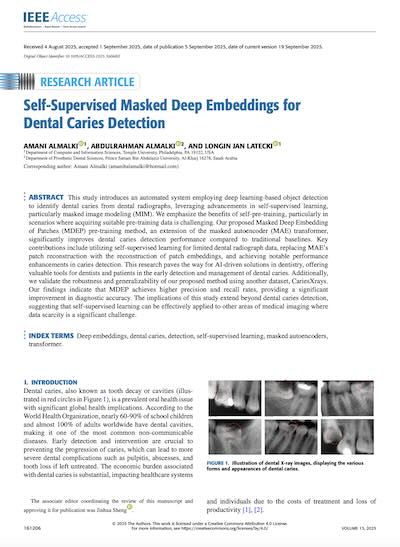Today's article comes from the IEEE Access journal. The authors are Almalki et al., from Temple University, in Philadelphia. In this paper they introduce a new system (called MDEP) for dental cavity detection.
DOI: 10.1109/ACCESS.2025.3606811


You must be an active Journal Club member to access this content. If you're already a member, click the blue button to login. If you're not a member yet, click the sign-up button to get started.
Login to My Account
Sign Up